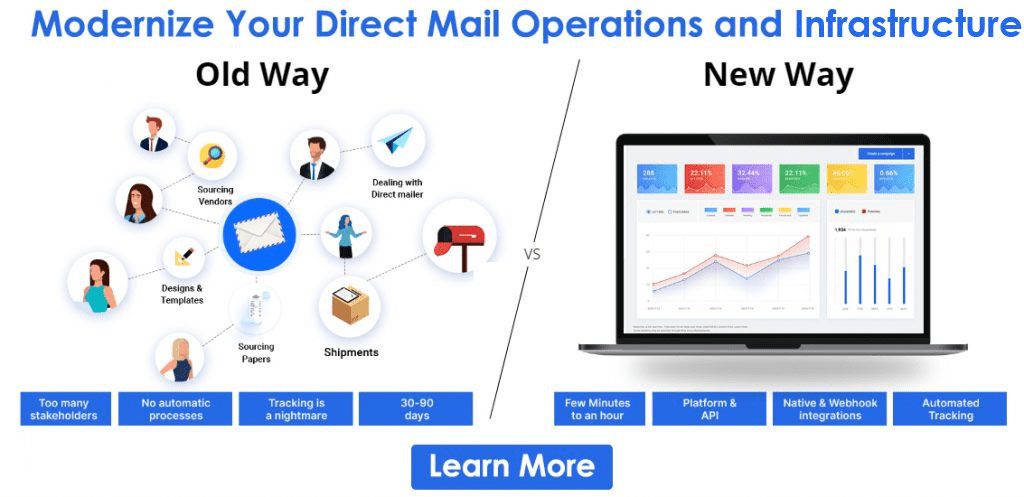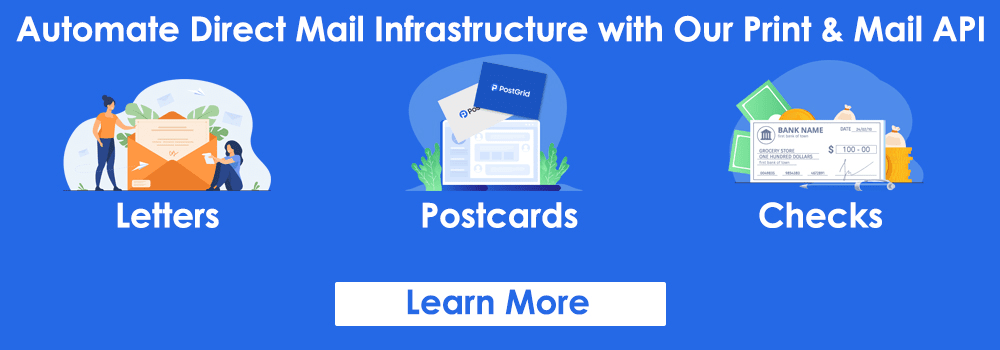How to Tell If an Address is Real?
How to Tell If an Address is Real?
Before mailing a package or a direct mail piece to someone, how do you tell whether an address is real, accurate, and deliverable? What if there is no one living at that address? How would you know if the address exists? It is a hundred percent sure that every business has stumbled upon such questions at some point, if not regularly.

What can help answer these questions? It is nothing but ‘address validation.’ These two words can change your whole game by distinguishing real addresses from unreal ones, verifying addresses against reputed data sources around the world, and helping you always capture the most accurate addresses.
Address validation is the process of identifying invalid and undeliverable addresses and correcting them as per the USPS database. It helps companies maintain clean address databases that can be useful in several ways. There are two types of address validation: real-time and bulk validation. Real-time address verification helps businesses avoid bad data from entering their system and corrects addresses right at point-of-entry. Bulk address verification works differently; it gives businesses the flexibility to check mailing addresses for validity at any time. These things may sound very simple, but it is actually a layered process consisting of several steps.
There is no longer the need to verify addresses manually and worry about the question, “is this a real address?” An address validation API like PostGrid can help process addresses and check whether they are real. Additionally, it can help you compare your addresses with USPS CASS-certified addresses to make the necessary modifications.
Reasons Why an Address Is Marked as Unreal or Invalid
Sometimes, even after doing everything right, addresses are marked invalid. It becomes difficult to find out the exact reason why an address is undeliverable. Please note that there is a difference between unreal and invalid addresses. Unreal addresses do not exist, while invalid addresses might exist but are just marked as invalid due to certain reasons. In either case, those addresses are not deliverable and might need some corrections. Below are some of the most common reasons why an address would be categorized as undeliverable:
Incorrect Inputs
It is certainly possible that the address is correct but marked as invalid due to incorrect inputs. Manual address inputs are highly prone to errors, and hence it is advisable to integrate PostGrid’s address verification API with your CRM. This integration can help you import data easily and start verifying addresses from your database without any manual interventions.
Address Does Not Exist
More than once, you will come across addresses that do not exist and are hence marked invalid. These addresses might be completely fake or imaginary. Otherwise, these addresses might have been demolished or condemned, due to which they no longer exist in the official records. If that is the case, you cannot mail to these addresses, which is why an address validation API will tell you that the addresses you are looking for are unreal.
Unoccupied or Vacant
Again, you cannot mail to an address that is vacant. The job of any address validation tool is not only to determine whether an address is real or not but also if it is mailable. Unoccupied addresses are clearly not mailable and classified as invalid.
Not Registered
There are two types of addresses under this category. One type consists of ‘not registered’ addresses, and the other type consists of ‘not yet registered’ addresses. As it is not the USPS’s responsibility to keep track of every existing address, the duty falls on citizens to get their addresses registered or apply for an address change every time they move. It means that you sign up for receiving mail and the USPS only keeps tabs on such addresses. There are many addresses that are not registered, which is why all of these addresses will be marked invalid.
Similarly, there are some new homeowners or tenants that didn’t have the time to get their addresses registered yet. These new addresses shall remain invalid until the entire registration isn’t completed. Hence, they fall under the not yet registered category. An important point to note here is that address statuses are likely to keep changing over a period of time.
Not Serviceable
Some addresses are shown invalid just because they are ‘outside service area,’ and the USPS post office does not deliver to those locations. It happens rarely but could be one of the reasons. However, PostGrid can help you identify and verify such addresses as well.
PO Boxes
Though the USPS has data on PO Boxes, the physical addresses under the PO Box area might not be marked valid. If the mail is not delivered to someone’s physical address, it is highly likely that this address is marked invalid, even after being real.
Incomplete Information
It is quite difficult to validate incomplete addresses. This way, you will only be checking the validity of a city or a street, not the address. A lot of times, internal unit details are missing from addresses. Normally, you can never guess the apartment or suite number of an address. But, PostGrid uses geocoding to determine users’ internal units and autocomplete addresses accordingly.
How to Validate Addresses
Broadly and generally speaking, there are two ways to validate addresses. The first and hectic way is to get an in-house team to spend weeks and months on cross-verifying addresses manually. It is not just boring and monotonous but can affect your data quality in more ways than you can think of. The second and easy way is to use PostGrid’s address validation solutions. It is time-saving, cost-effective, and way more accurate. Plus, there is no way all of the reasons mentioned in the above section can be identified, and the necessary corrections are done manually. So let us find out how an address validation API can answer your question: is this a real address?
Geocoding
As we saw earlier, often, people forget to include their apartment number or street name while entering their addresses. PostGrid uses rooftop geocoding to place the coordinates nearest to an address and capture it in real-time. This way, you can record even the minute details like the secondary address units.
ZIP+4 Accuracy
It is always better to use ZIP+4 codes in your addresses. They ensure a better deliverability rate. Though ZIP codes do their job, ZIP+4 codes assure the most accurate and fastest mailing possible. They help determine the exact delivery route and narrow down the address search for the postal workers.
PostGrid can help you find ZIP+4 codes for your mailing addresses so that your mail items can be delivered speedily. You might be wondering how finding ZIP+4 codes can help know whether an address is real. In short, addresses are made up of internal units, street addresses, cities, states, and ZIP codes. Even if one part is incomplete or incorrect, the address can be considered as unreal. Hence, ZIP codes are important to check address validity and you can add to their usefulness by adding the extra four digits.
International Address Validation
Businesses dealing with international clients or customers know the importance of international address validation. PostGrid’s address verification API can help you run a search for any address around the globe as it has data of about 240 countries and territories. It can help you transliterate your addresses and verify them against the data of various postal organizations in the world. PostGrid combines the databases of all the reputed organizations and other data sources to return precise and deliverable addresses.
Autocomplete, Parsing, and Standardization
Whenever there is anything related to address verification, you will hear these terms. They are as important as the final validation process. As discussed earlier, incomplete addresses can be marked invalid. Moreover, even unformatted addresses can be treated as invalid. Hence, it is important to add missing details, parse all the components into their respective address fields, standardize addresses as per the destination country’s guidelines, and then run the validation check. This way, you will be assured that the addresses aren’t marked invalid due to missing details or standardization issues.
PostGrid also has fuzzy matching capabilities. Its address validation API can correct wrong abbreviations, misspellings, capitalization mistakes, spacing errors, and wrong ZIP codes.
Benefits of Determining Whether Addresses Are Real
- No more lost mail and delivery delays
- Maintain brand reputation by printing and mailing on time
- Incorporate the address validation API into your website to improve user experience
- Have access to cleansed and updated database always
- Focus on your business more than on logistics
- Save money and manual effort spent on reshipping
- Provide better customer service
It is simple to tell if an address is real; all you have to do is deploy the right solution. With PostGrid, companies can complete their address verification processes in minutes and continue to print and mail without any issues. Eliminate manual effort, save hundreds of dollars, and impress customers and prospects, all with the help of correct addresses and assured deliverability.
Ready to Get Started?
Start transforming and automating your offline communications with PostGrid
The post How to Tell If an Address is Real? appeared first on PostGrid.
source https://www.postgrid.com/how-to-tell-if-an-address-is-real/



Comments
Post a Comment